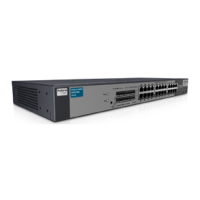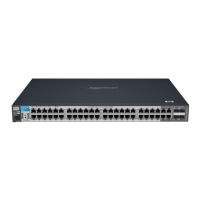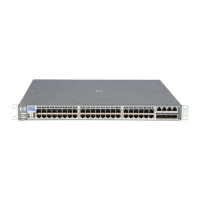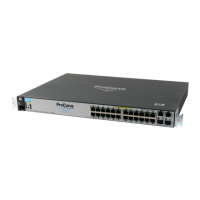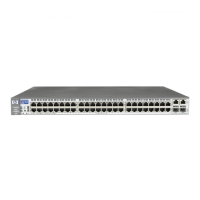6-61
Quality of Service (QoS): Managing Bandwidth More Effectively
Using QoS Types To Configure QoS for Outbound Traffic
affect the packet queuing priority or VLAN tagging. In this case, the packets
are handled as follows (as long as no other QoS feature creates priority
assignments for them):
Note On Changing a Priority Setting
If a QoS type is using a policy (codepoint and associated priority) in the DSCP
Policy table, you must delete or change this usage before you can change the
priority setting on the codepoint. Otherwise the switch blocks the change and
displays this message:
Cannot modify DSCP Policy < codepoint > - in use by other
qos rules.
In this case, use show qos < type > to identify the specific types using the policy
you want to change; that is:
show qos device-priority
show qos port-priority
show qos tcp-udp-port-priority
show qos vlan-priority
show qos type-of-service
For example, suppose that the 000001 codepoint has a priority of 6, and several
types use the 000001 codepoint to assign a priority to their respective types of
traffic. If you wanted to change the priority of codepoint 000001 you would
do the following:
1. Identify which QoS types use the codepoint.
2. Change the type configurations by assigning them to a different DSCP
policy, or to an 802.1p priority, or to No-override.
3. Reconfigure the desired priority for the 000001 codepoint.
4. Either reassign the types to the 00001 codepoint policy or leave them as
they were after step 2, above.
802.1Q Status Outbound 802.1p
Priority
Received and Forwarded on a tagged port member of a VLAN. Unchanged
Received on an Untagged port member of a VLAN; Forwarded on a
tagged port member of a VLAN.
0 (zero)—”normal”
Forwarded on an Untagged port member of a VLAN. None
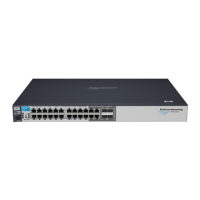
